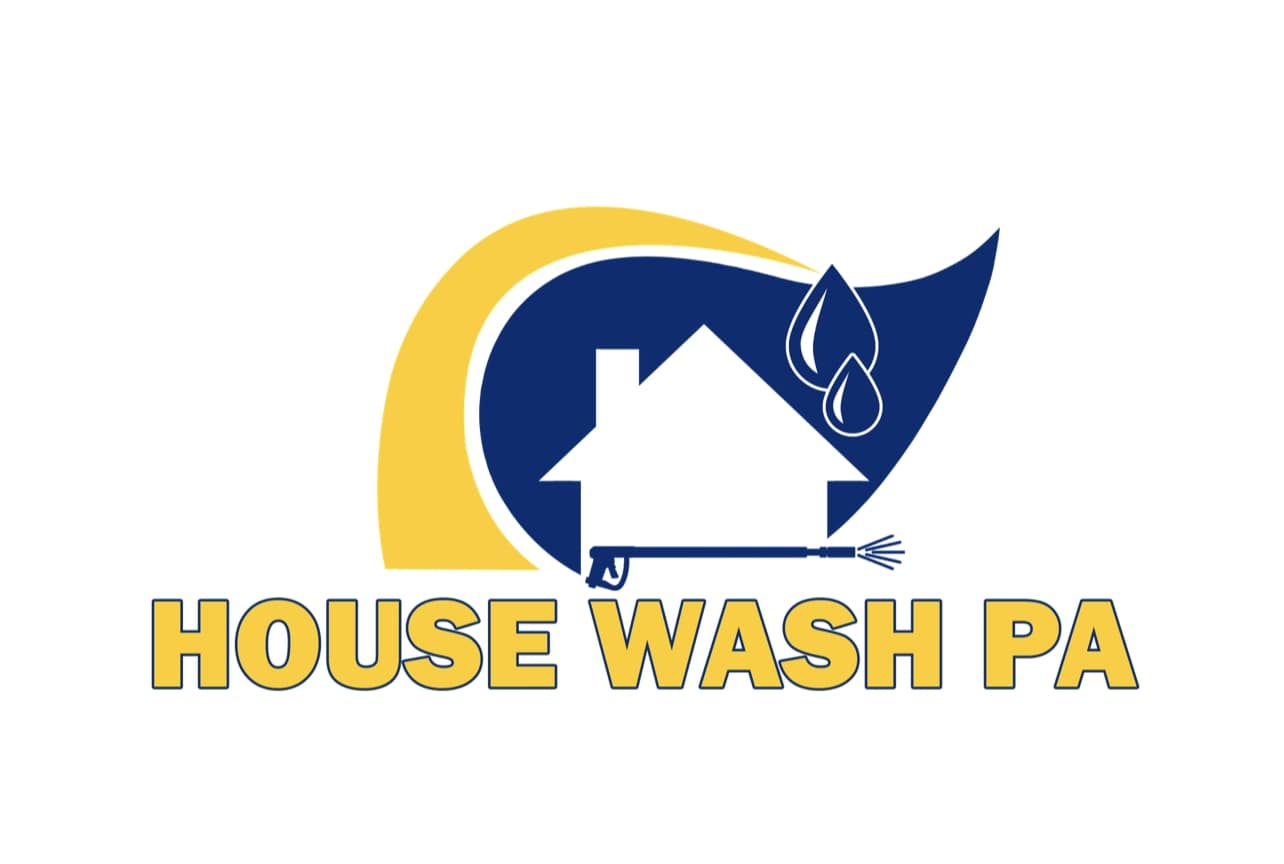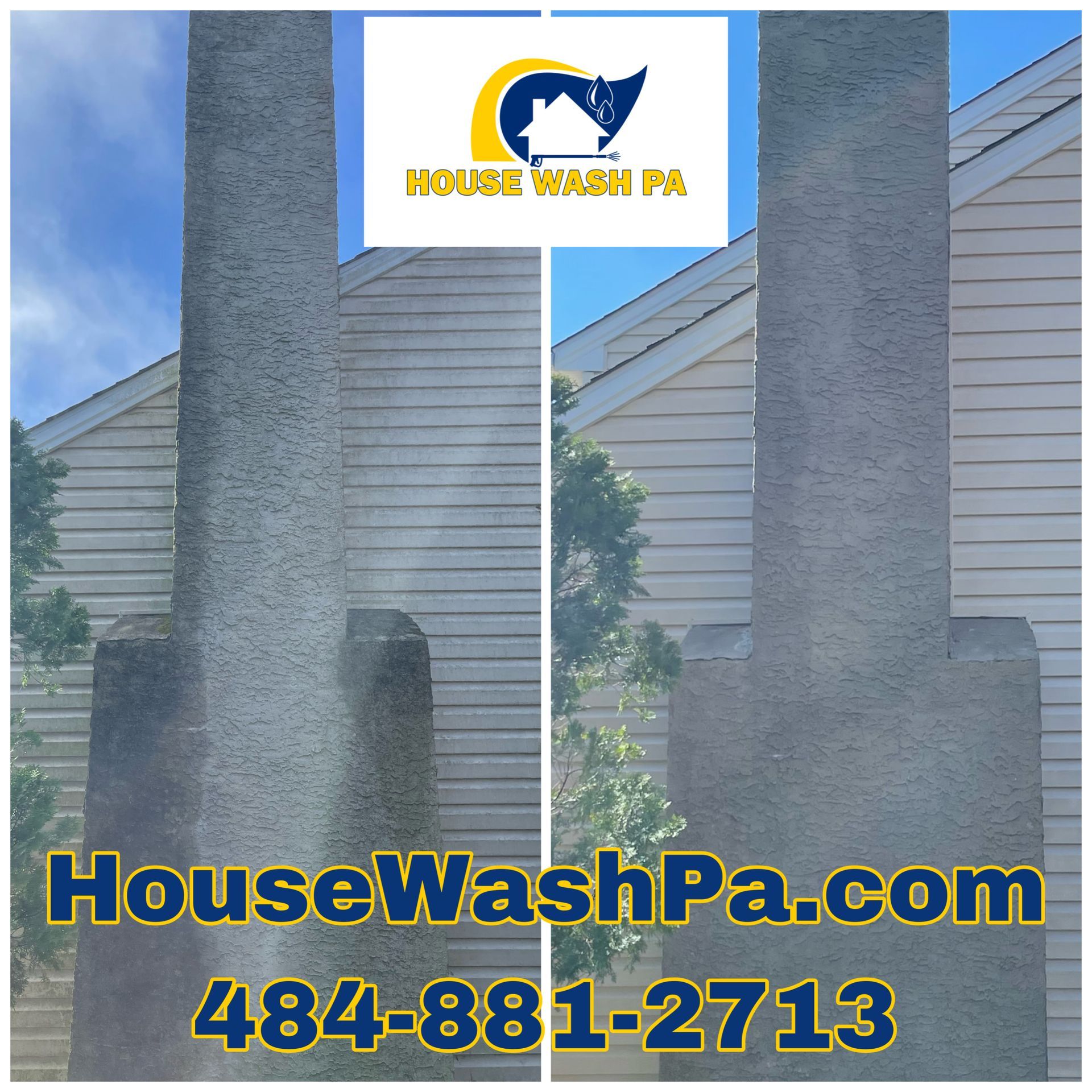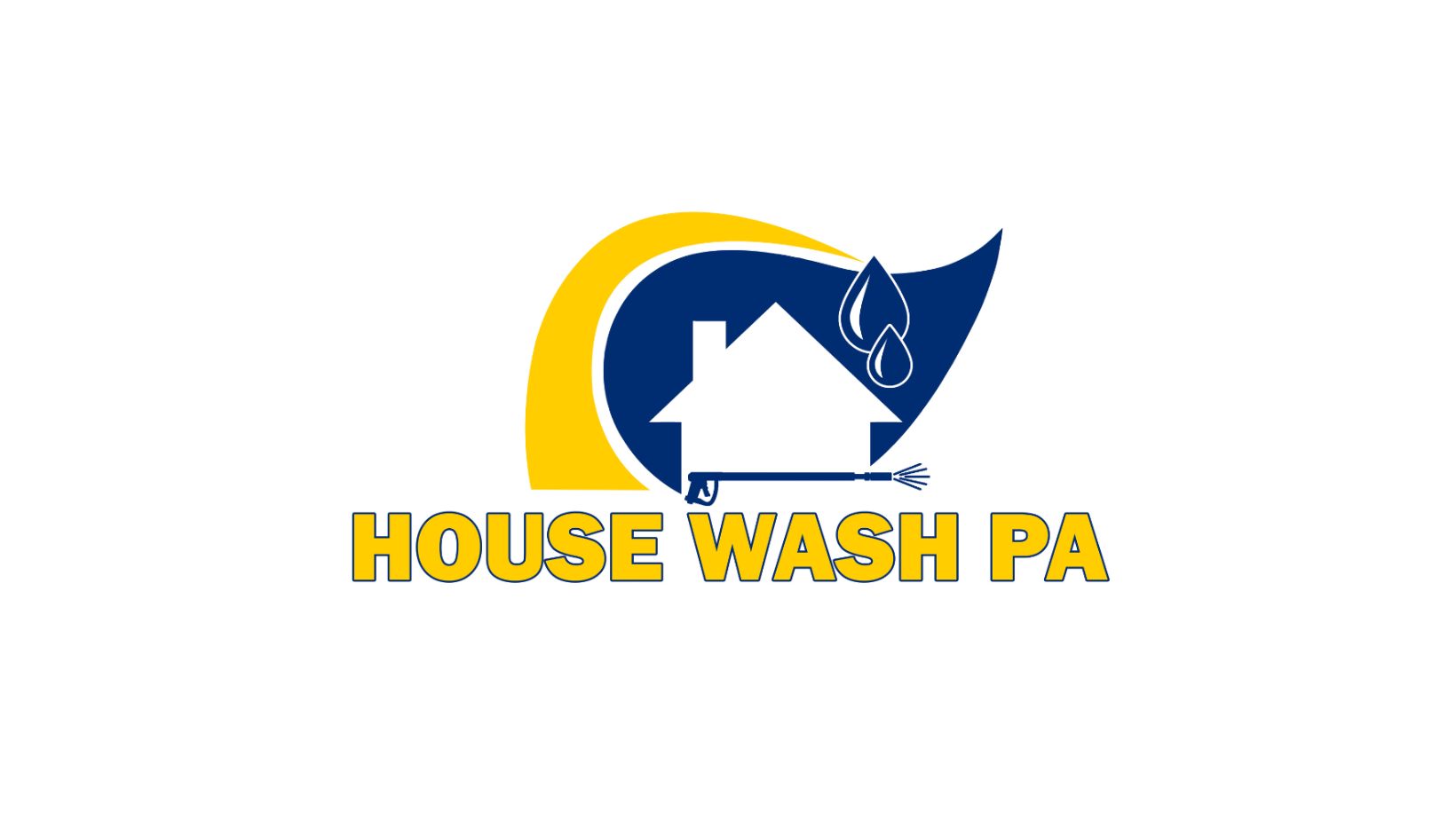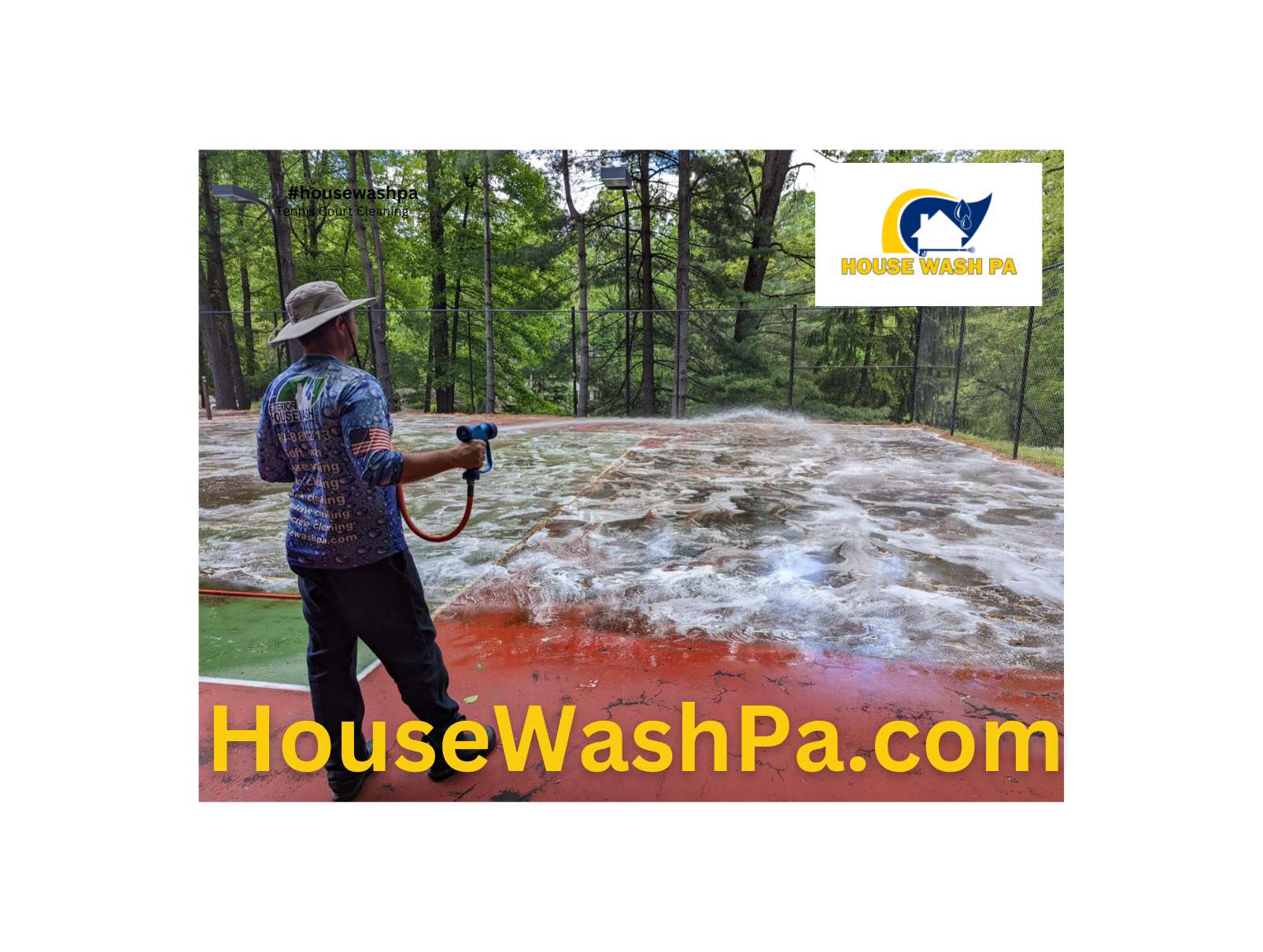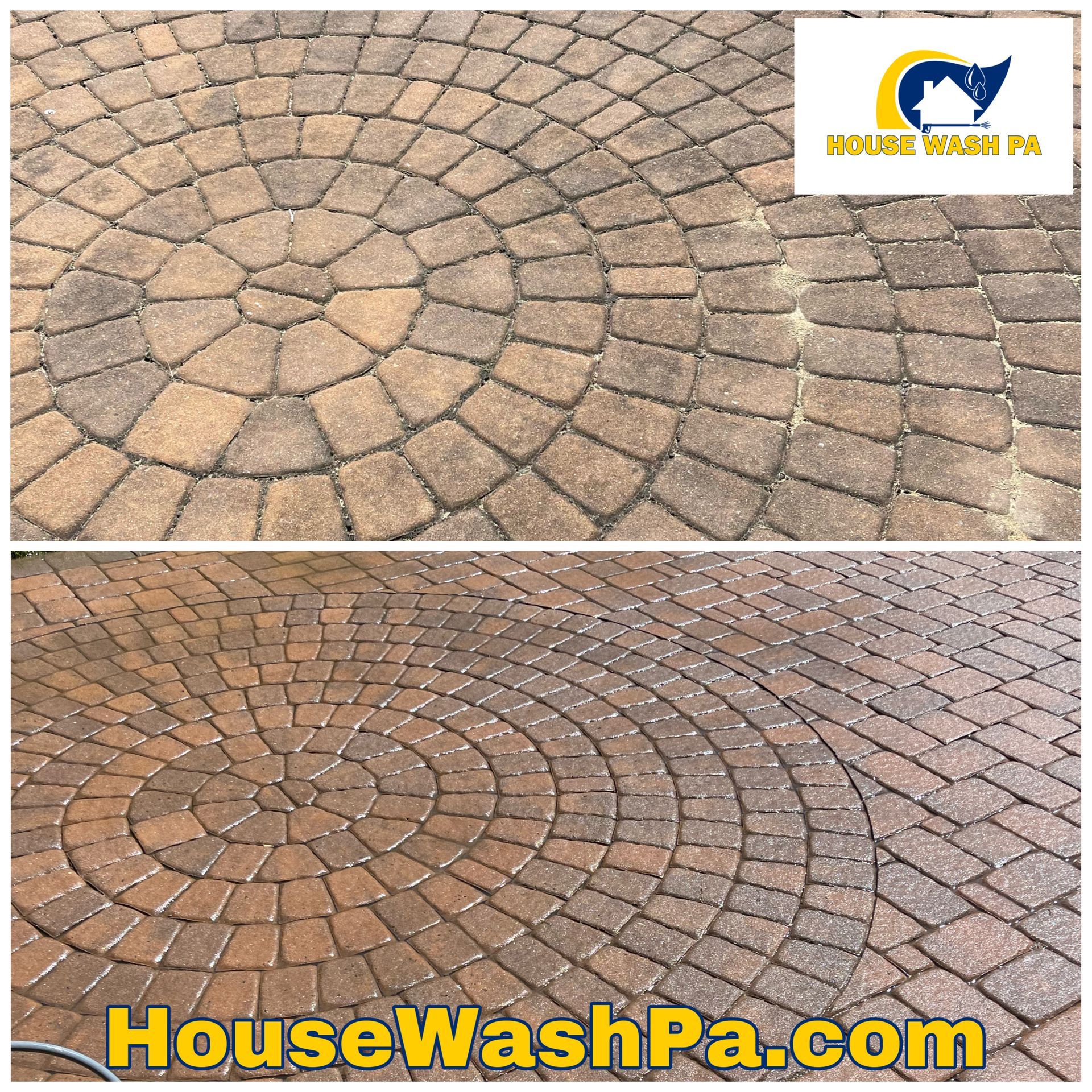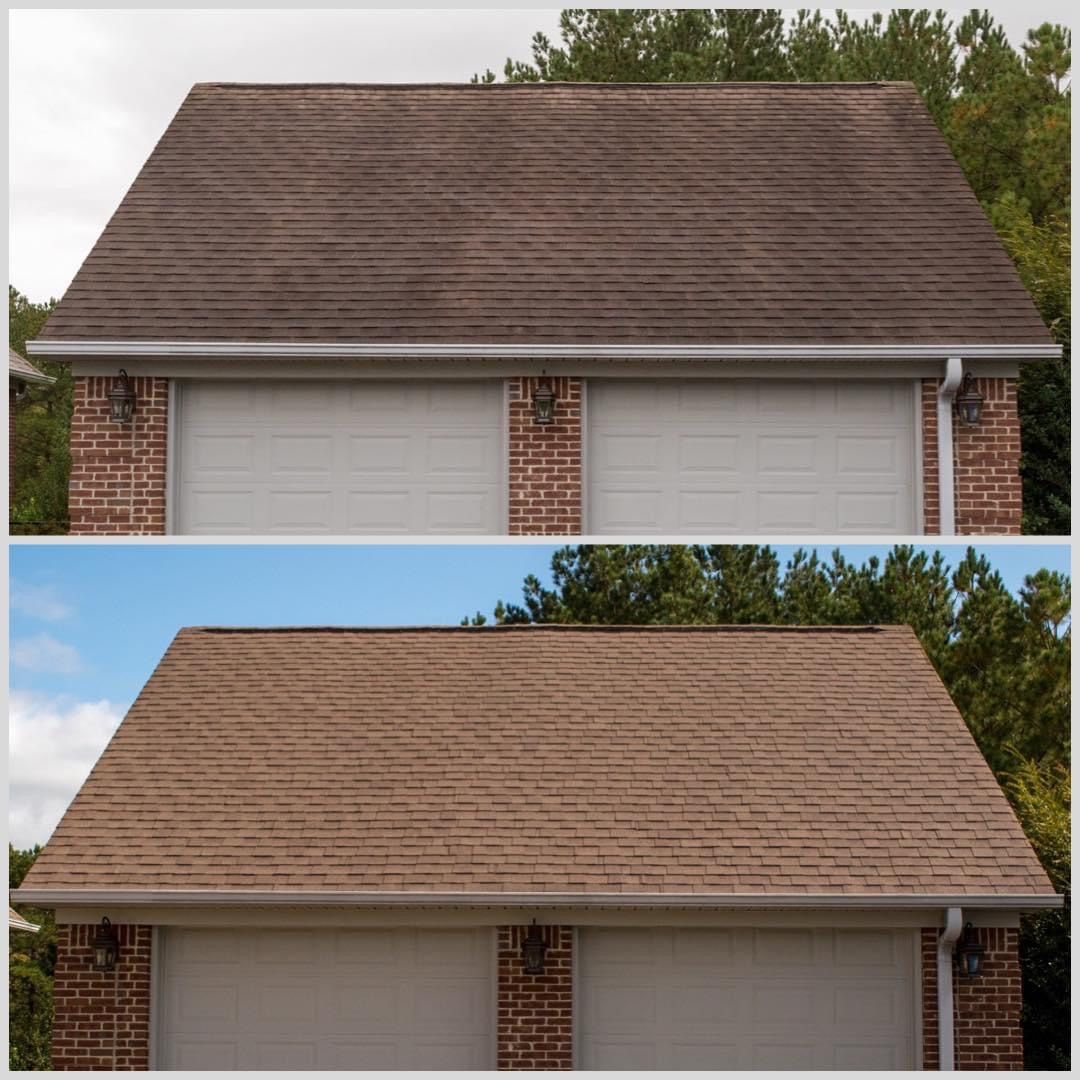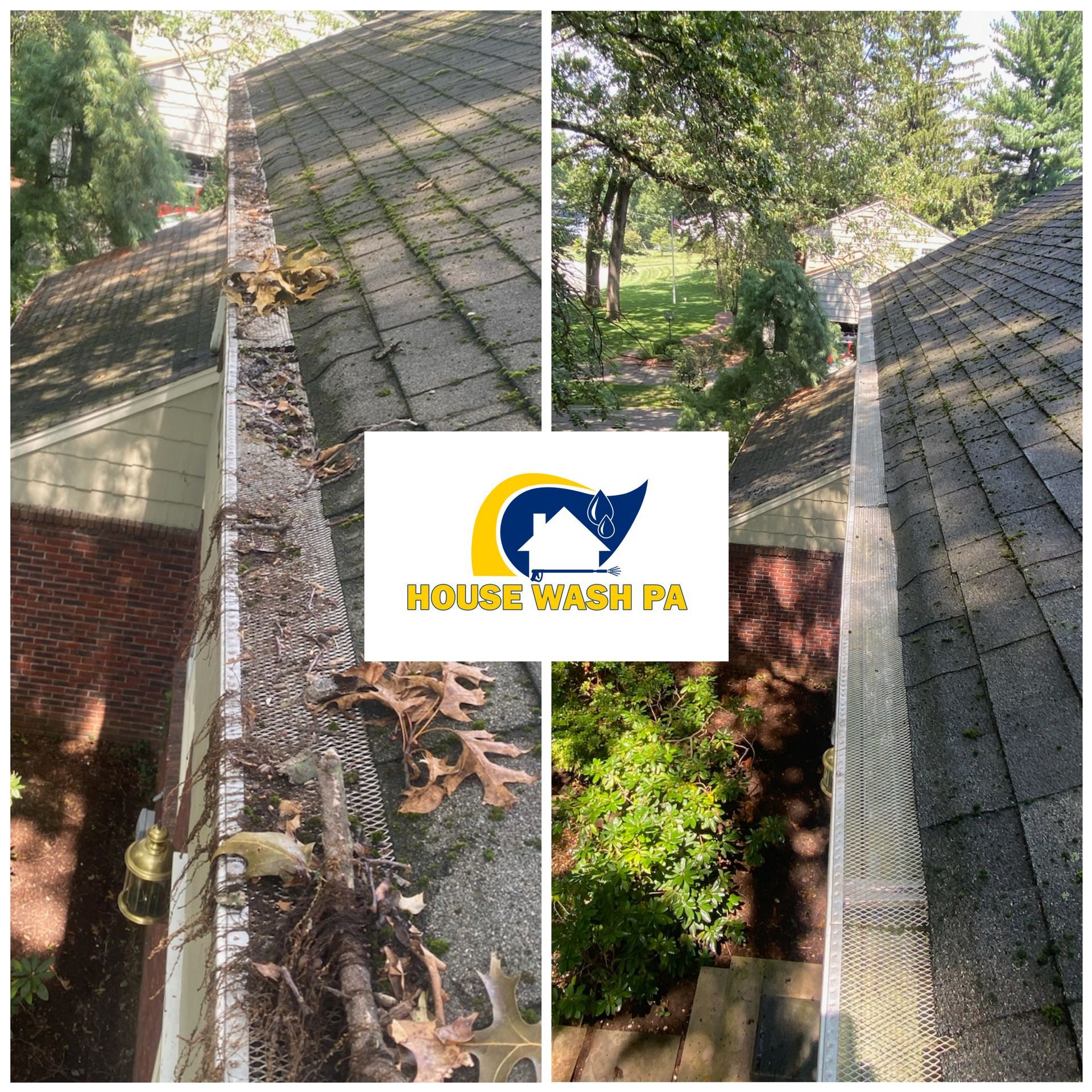Unraveling the Mysteries of Surfactants: How They Revolutionize Soft Washing
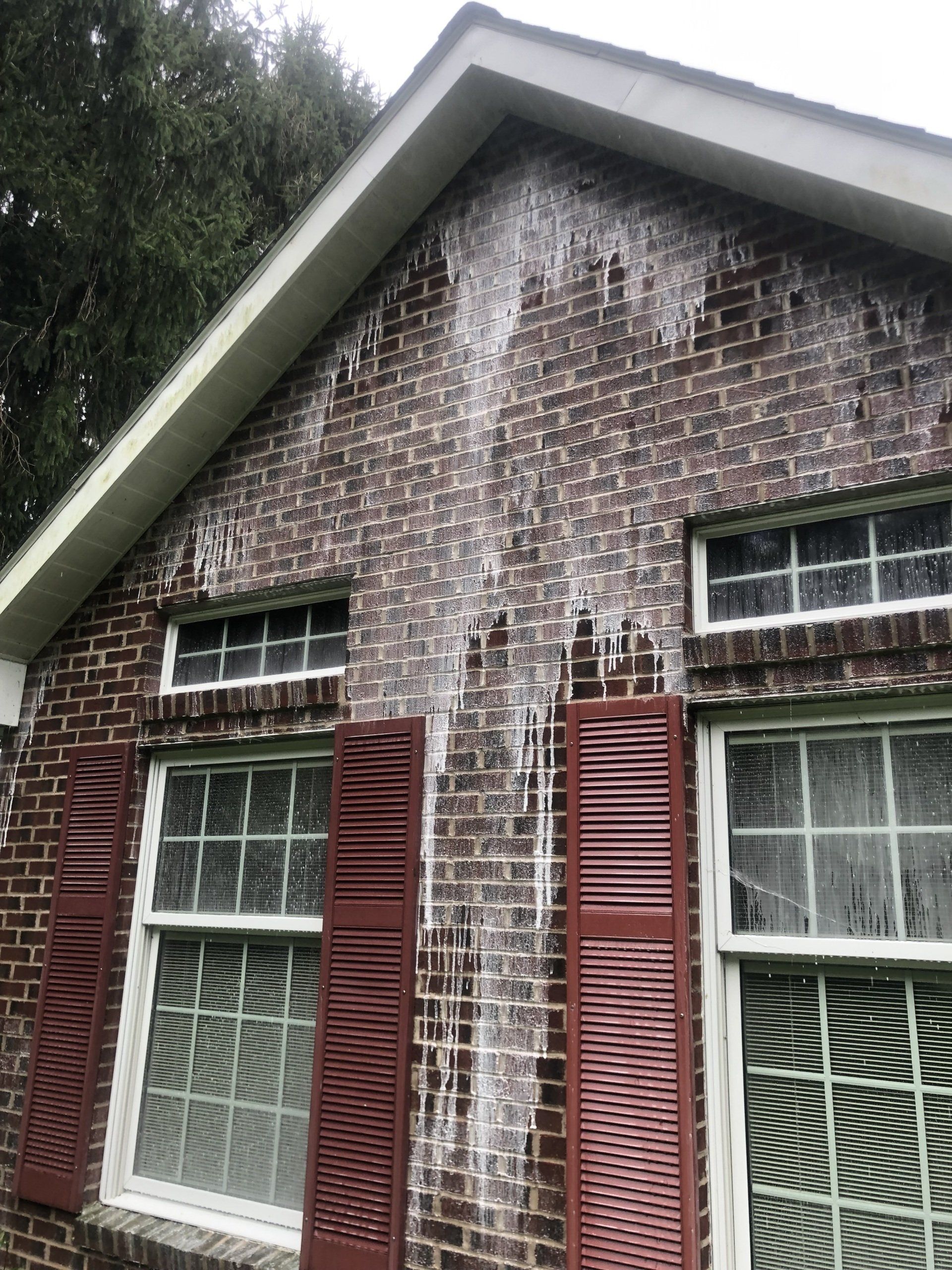
The Significance of Surfactants in Cleaning
Surfactants play a significant role in the soft washing field, as they can enhance the cleaning process and improve overall efficiency. Understanding surfactants' significance can shed why they are integral to the cleaning industry.
- Enhancing Water's Cleaning Ability: Water is a polar molecule with positively and negatively charged areas. However, most dirt and contaminants are nonpolar, making them difficult to remove with water alone. Surfactants act as mediators between water and the contaminants, reducing the surface tension of water and allowing it to penetrate and surround the dirt particles. This results in improved wetting and emulsification, making lifting and removing dirt from surfaces easier.
- Emulsification of Oil and Grease: Surfactants are particularly effective in tackling oil and grease, which are common contaminants in various cleaning applications. Surfactant molecules have both hydrophilic (water-loving) and hydrophobic (oil-loving) regions. When surfactants come into contact with oil or grease, their hydrophobic tails attach to the grease molecules, while the hydrophilic heads face the surrounding water; this forms micelle, where the grease is encapsulated and dispersed in the water, enabling thorough cleaning and removal.
- Soil Suspensions and Anti-Redeposition: Surfactants help loosen and emulsify dirt particles and prevent them from reattaching to the cleaned surface. By forming micelles, surfactants keep dirt and contaminants suspended in the cleaning solution, preventing them from resettling on the surface during the cleaning process. This anti-redeposition effect ensures the cleaning solution remains effective until the contaminants are properly rinsed.
- Stain Removal: Surfactants are especially useful for stain removal. Many stains are caused by substances that are not easily soluble in water, such as oils, pigments, and proteins. Surfactants aid in solubilizing or dispersing these substances, allowing them to be lifted from the surface and rinsed away. They also help to prevent stains from setting by keeping the stains suspended and preventing them from bonding with the surface.
- Foam Formation: Surfactants are responsible for the foaming action observed in many cleaning products. Foam has a visual appeal, serves as an indicator of cleaning, and helps evenly distribute the cleaning agent over a surface. Surfactants lower the surface tension of water, allowing it to trap air and form a stable foam. The foam improves the contact between the cleaning solution and the surface, enhancing the cleaning efficacy.
- Fragrance Addition: Some surfactants are specifically formulated to have fragrance properties. These fragrant surfactants can be added to sodium hypochlorite solutions to mask or neutralize the bleach odor with a more pleasant scent. This fragrance addition not only helps to counteract the smell of sodium hypochlorite but also leaves a fresh aroma in the treated area, enhancing the overall cleaning experience.
- Odor Encapsulation: Surfactants can encapsulate or trap odor molecules within their micelle structures. Micelles are tiny clusters formed by surfactant molecules in a liquid solution. When surfactants are added to sodium hypochlorite, they create a barrier around the odor molecules, effectively preventing them from being released into the surrounding air. This encapsulation process significantly reduces the strength of the odor, making the cleaning experience more pleasant for professionals and clients.
The significance of surfactants in soft washing cannot be overstated. From improving water's cleaning ability to emulsifying and removing oil and grease, surfactants revolutionize the cleaning process by enabling more effective and efficient results. Understanding their role empowers us to make informed choices when selecting cleaning products and techniques, ensuring optimal cleanliness and hygiene.
Understanding the Chemistry Behind Surfactants
To fully comprehend the role of surfactants in soft washing, it is essential to delve into their chemistry. Surfactants, also known as surface-active agents, are diverse compounds that possess unique properties due to their molecular structure.
At a molecular level, surfactants consist of two distinct regions: a hydrophilic (water-loving) head and a hydrophobic (water-repellent) tail. This arrangement contributes to their remarkable ability to interact with water- and oil-based substances, making them ideal for cleaning applications.
The hydrophilic head of a surfactant molecule is typically polar, meaning it carries an electric charge. Common polar head groups found in surfactants include carboxylates, sulfates, amines, and quaternary ammonium compounds. These charged groups can attract water molecules, allowing surfactants to dissolve in aqueous solutions and form stable solutions.
On the other hand, the hydrophobic tail of a surfactant molecule is composed of nonpolar hydrocarbon chains. These chains are derived from various sources, such as fatty acids, alcohols, or hydrocarbon derivatives. The nonpolar nature of the hydrophobic tail makes it immiscible in water but readily soluble in oil-based substances.
When surfactants are introduced into a cleaning system, their unique molecular structure enables them to bridge the gap between water and oil, facilitating the removal of dirt and contaminants. This process occurs in several steps:
- Adsorption: When surfactants are added to water, they migrate to the water-air or water-solid interfaces due to the polarity of their hydrophilic heads. At these interfaces, they form a monolayer layer, with their hydrophilic heads facing the water and their hydrophobic tails protruding into the air or onto the solid surface.
- Micelle Formation: As the concentration of surfactant molecules increases, they begin to aggregate in water to minimize their exposure to the hydrophobic environment. This aggregation results in the formation of micelles, which are spherical structures that trap oil and grease molecules within their hydrophobic cores. The hydrophilic heads of the surfactant molecules face outward, ensuring the micelles remain soluble in water.
- Emulsification: The presence of micelles enhances the emulsification process by dispersing oil-based substances throughout the aqueous solution. The hydrophilic heads of surfactant molecules surround the oil droplets, while their hydrophobic tails interact with the oil molecules; this stabilizes the emulsion and prevents the separated oil or grease from recombining.
- Wetting and Penetration: Surfactants also improve the wetting ability of water, allowing it to spread and penetrate into porous surfaces, such as fabrics or carpets. By lowering the surface tension of water, surfactants facilitate its contact with the surface, enhancing the cleaning process's efficacy.
- Dispersing and Suspending Particles: Surfactants possess dispersing and suspending properties, preventing particles and dirt from redepositing onto the cleaned surface; this is achieved by maintaining the particles in a suspended state within the cleaning solution, ensuring they do not settle back onto the surface prematurely.
Understanding the chemistry behind surfactants provides valuable insights into how these compounds facilitate the cleaning process. By employing their hydrophilic and hydrophobic properties, surfactants effectively bridge the gap between water and oil-based substances, enabling the removal of dirt, oil, grease, and other contaminants. This knowledge empowers soft washing companies to make informed choices when selecting cleaning products, ensuring optimal cleaning outcomes.
The Role of Surfactants in Enhancing Soft Washing Efficiency
Surfactants are crucial in revolutionizing the cleaning industry by significantly enhancing cleaning efficiency. These compounds, with their unique molecular structure and properties, effectively remove dirt, oil, grease, and other contaminants from various surfaces. Understanding their role can help consumers make informed choices when selecting cleaning products.
- Reduction of Surface Tension: Surfactants reduce the surface tension of water, enabling it to spread more easily and penetrate porous surfaces such as fabrics or carpets. This increased wetting ability allows water to reach and lift dirt and stains, improving the overall cleaning process. Surfactants help water spread evenly on a surface, ensuring thorough cleaning and preventing the formation of water droplets that can leave streaks or residue.
- Emulsification of Oil and Grease: Surfactants form micelles, which are spherical structures that trap oil and grease molecules within their hydrophobic cores. These micelles disperse oil-based substances throughout the cleaning solution, preventing them from redepositing onto the surface. The hydrophilic heads of surfactant molecules interact with water, keeping the micelles soluble and stable. This emulsification process allows for the effective removal of stubborn stains and greasy residues.
- Dispersing and Suspending Particles: Surfactants possess dispersing and suspending properties, ensuring particles and dirt remain suspended within the cleaning solution. By preventing particles from settling back onto the surface prematurely, surfactants help maintain cleanliness, and this is especially important in applications such as laundry detergents, where surfactants prevent dirt particles from reattaching to clothing during the washing cycle.
- Soil Anti-Repositioning: Surfactants also prevent soil repositioning by suspending and dispersing dirt particles in the cleaning solution. By forming a protective barrier around the particles, surfactants prevent them from settling back onto the surface, and this ensures that the cleaning solution effectively removes soil and prevents it from redepositing, resulting in a cleaner and more visually appealing surface.
- Compatibility with Various Cleaning Agents: Surfactants exhibit compatibility with a wide range of cleaning agents, making them versatile and effective in different cleaning applications. They can be combined with other chemicals, such as enzymes or solvents, to enhance their cleaning properties. Surfactants enhance the performance of these cleaning agents by improving their solubility, dispersion, and wetting abilities.
- Environmental Benefits: Many surfactants used in cleaning products today are designed to be environmentally friendly. They are biodegradable and have low toxicity, ensuring minimal environmental harm. Surfactants help reduce the environmental impact of cleaning by enabling efficient removal of contaminants with lower water, energy, and chemical consumption.
By understanding the role of surfactants in enhancing cleaning efficiency, consumers can make informed decisions when selecting cleaning products. Surfactant-based cleaners can ensure effective and environmentally friendly cleaning, leading to better cleaning outcomes and improved hygiene. Using surfactants in cleaning products revolutionizes the industry, offering efficient solutions for the challenges of modern cleaning needs.
Exploring the Various Types of Surfactants
Surfactants, also known as surface-active agents, are compounds with unique chemical properties that enable them to revolutionize the cleaning industry. There are various types of surfactants, each with its characteristics and functionalities. Understanding the different types can help consumers choose the right cleaning products. Here are some of the most common types of surfactants:
- Anionic Surfactants: Anionic surfactants are the most widely used in cleaning products. They have a negatively charged hydrophilic (water-attracting) head and effectively remove dirt, oil, and grease from surfaces. Anionic surfactants are commonly found in laundry detergents, dishwashing liquids, and household cleaners. They provide excellent foaming and cleaning properties, making them suitable for various applications.
- Cationic Surfactants: Cationic surfactants have a positively charged hydrophilic head and are often used as disinfectants and sanitizers. They are antimicrobial and can kill bacteria, viruses, and other microorganisms. Cationic surfactants are commonly found in disinfecting wipes, fabric softeners, and personal care products such as shampoos and conditioners. They can also act as fabric conditioners by reducing static electricity.
- Nonionic Surfactants: Nonionic surfactants have no charge and are considered less aggressive than anionic and cationic surfactants. They are highly effective in removing greasy stains and suitable for delicate fabrics and sensitive skin. Nonionic surfactants are commonly found in laundry detergents, stain removers, and baby care products. They provide excellent cleaning performance while being gentle on fabrics and skin.
- Amphoteric Surfactants: Amphoteric surfactants have positively and negatively charged hydrophilic groups. They have a broader pH tolerance and can act as either anionic or cationic surfactants, depending on the pH of the solution. Amphoteric surfactants are often used in personal care products such as shampoos, body washes, and facial cleansers. They provide mild cleansing properties and help maintain the skin's natural pH balance.
- Silicone Surfactants: Silicone surfactants are a special type of surfactant that contains silicone as part of their chemical structure. They are hydrophobic (water-repelling) and provide excellent spreadability and lubrication properties. Silicone surfactants are commonly used in cleaning products for surfaces such as glass, stainless steel, and automotive finishes. They create a protective film that helps repel water, dirt, and stains, making surfaces easier to clean and maintain.
It's important to note that many cleaning products combine different surfactants to optimize their cleaning performance. The specific combination and concentration of surfactants in a product depend on the intended application and desired cleaning outcome. Consumers should carefully read product labels and choose cleaning products suitable for their needs.
In conclusion, the various types of surfactants offer different cleaning functionalities and are designed to address specific cleaning challenges. By understanding the characteristics of each type of surfactant, soft wash companies can make informed decisions and choose cleaning products that will effectively meet their cleaning needs while ensuring optimal cleaning outcomes and improved hygiene.
Unveiling the Environmental Impact of Surfactants
Surfactants have revolutionized the cleaning industry with their unique chemical properties and functionalities. However, it is important to understand the environmental impact of surfactants to make informed decisions and choose cleaning products that are sustainable and eco-friendly.
- Biodegradability: One of the key factors to consider when assessing the environmental impact of surfactants is their biodegradability. Biodegradable surfactants break down into simpler compounds through natural processes, reducing their persistence in the environment. Look for cleaning products that contain biodegradable surfactants to minimize the accumulation of harmful substances.
- Aquatic toxicity: Surfactants can have varying toxicity levels to aquatic organisms, depending on their chemical structure and concentration. Some surfactants may harm aquatic life, especially when released into water bodies such as rivers and oceans. It is important to choose surfactants tested and proven to have minimal impact on aquatic ecosystems.
- Eutrophication: Surfactants can contribute to eutrophication, especially those used in laundry detergents and household cleaners. Eutrophication occurs when excess nutrients, such as nitrogen and phosphorus, enter water bodies and stimulate the growth of algae and other water plants. This excessive growth depletes oxygen levels in the water, leading to the death of aquatic organisms. Look for low phosphorus and nitrogen surfactants to minimize the risk of eutrophication.
- Microplastic pollution: Some surfactants, particularly those used in personal care products, have been found to contribute to microplastic pollution. Microplastics are tiny particles of plastic less than 5mm in size. They can harm aquatic life and accumulate in the food chain, posing a potential risk to human health. Avoid surfactants that contain microplastics, and choose products that use alternative ingredients or biodegradable surfactants.
- Carbon footprint: The surfactants' production, use, and disposal can contribute to greenhouse gas emissions and climate change. Consider the carbon footprint of the surfactants used in cleaning products, and choose products manufactured using sustainable practices and renewable energy sources. Look for certifications, such as the Carbon Trust, that indicate a product's commitment to reducing its carbon footprint.
- Packaging waste: Another aspect to consider is the packaging waste generated by cleaning products. Opt for products that use minimal packaging and choose packaging materials that are recyclable or made from recycled materials. Additionally, look for refillable options to reduce the amount of single-use plastic waste.
By considering the environmental impact of surfactants, consumers can make choices that align with their sustainability values and contribute to a cleaner and healthier planet. Look for third-party certifications and eco-labels that indicate a product's commitment to environmental responsibility. Soft washing companies can minimize the environmental footprint of cleaning products and promote a more sustainable future.
Surfactants: Paving the Way for Revolutionary Cleaning Solutions
Surfactants have revolutionized the cleaning industry with their unique chemical properties and functionalities. These versatile compounds are crucial in cleaning products, from laundry detergents to household cleaners and personal care items. By understanding the capabilities and applications of surfactants, we can unlock their full potential and pave the way for revolutionary cleaning solutions.
- Surface Tension Reduction: At the heart of surfactants' cleaning power is their ability to reduce surface tension. Surface tension is the force that makes water molecules stick together, causing water droplets to form. Surfactants disrupt this surface tension, allowing water to spread and penetrate the surface more effectively. This property enables surfactants to lift and remove dirt, grease, and stains from various surfaces, making cleaning more efficient.
- Emulsification: Surfactants also excel at emulsification, where they disperse and dissolve typically immiscible substances, such as oil and water. By forming micelles, surfactants encapsulate oils, grease, and dirt particles, making them soluble in water. This emulsifying action enables surfactants to effectively remove oil-based stains and grime, leaving surfaces clean and residue-free.
- Wetting and Dispersing: Surfactants enhance cleaning agents' wetting and dispersing capabilities. Their hydrophilic (water-loving) and lipophilic (oil-loving) properties allow them to interact with water and dirt particles simultaneously. This dual interaction promotes the even distribution of cleaning agents across surfaces and ensures optimal contact between the cleaning solution and the dirt. As a result, surfactants improve the cleaning efficiency and effectiveness of various cleaning products.
- Stabilization: Surfactants are vital in stabilizing cleaning formulations, preventing ingredients from separating or settling. Surfactants facilitate the homogeneous mixing of different components in cleaning products by reducing interfacial tension. This stability ensures that cleaning solutions remain effective and consistent throughout their shelf life, providing reliable performance every time.
- Antibacterial and Antimicrobial Properties: Many surfactants possess antibacterial and antimicrobial properties, making them valuable in cleaning products for disinfection and sanitization. Surfactants disrupt the cell membranes of bacteria and other microorganisms, rendering them inactive and preventing their growth. This antimicrobial action enhances the hygiene and cleanliness of surfaces, reducing the risk of infections and illnesses.
- Environmentally Friendly Solutions: As the demand for sustainable and eco-friendly cleaning solutions grows, surfactants play a crucial role in developing environmentally friendly alternatives. Manufacturers are exploring renewable and biodegradable surfactants from natural sources like plant oils. These surfactants offer effective cleaning performance while minimizing the environmental impact associated with traditional surfactants.
- Innovation and Research: The future of surfactants in cleaning solutions is brimming with innovation and ongoing research. Scientists and manufacturers continuously explore new formulations and surfactant structures that deliver enhanced cleaning performance, improved biodegradability, and reduced environmental impact. Developing innovative surfactants will pave the way for next-generation cleaning products that address evolving consumer needs and sustainability concerns.
Surfactants have propelled the cleaning industry forward, enabling us to achieve higher levels of cleanliness and hygiene. As we continue to unlock the potential of surfactants, we can look forward to revolutionary cleaning solutions that marry effectiveness, sustainability, and environmental responsibility.
Conclusion: Embracing the Power of Surfactants in Cleaning
Surfactants have undoubtedly revolutionized the exterior cleaning industry with their unique chemical properties and versatile functionalities. By understanding and harnessing the capabilities of surfactants, we can unlock their full potential and pave the way for revolutionary cleaning solutions.
One of the key aspects of surfactants' cleaning power lies in their ability to reduce surface tension. By disrupting the forces that cause water molecules to stick together, surfactants enable water to spread and penetrate surfaces more effectively. This property allows surfactants to lift and remove dirt, grease, and stains, making cleaning more efficient.
In addition to surface tension reduction, surfactants excel at emulsification. Through the formation of micelles, surfactants can disperse and dissolve typically immiscible substances, such as oil and water. This emulsifying action enables surfactants to effectively remove oil-based stains and grime, leaving surfaces clean and residue-free.
Surfactants also enhance the wetting and dispersing capabilities of cleaning agents. Their hydrophilic and lipophilic properties allow them to interact with water and dirt particles simultaneously. This dual interaction promotes the even distribution of cleaning agents across surfaces, ensuring optimal contact between the cleaning solution and the dirt. As a result, surfactants improve the cleaning efficiency and effectiveness of various cleaning products.
Furthermore, surfactants are vital in stabilizing cleaning formulations, preventing ingredients from separating or settling. Surfactants facilitate the homogeneous mixing of different components in cleaning products by reducing interfacial tension. This stability ensures that cleaning solutions remain effective and consistent throughout their shelf life, providing reliable performance every time.
Many surfactants also possess antibacterial and antimicrobial properties, making them valuable in cleaning products for disinfection and sanitization. By disrupting the cell membranes of bacteria and other microorganisms, surfactants render them inactive and reduce the risk of infections and illnesses.
As the demand for sustainable cleaning solutions grows, surfactants are increasingly being developed from renewable and biodegradable sources like plant oils. These environmentally friendly surfactants offer effective cleaning performance while minimizing the environmental impact of traditional surfactants.
Looking ahead, the future of surfactants in cleaning solutions is brimming with innovation and ongoing research. Scientists and manufacturers continuously explore new formulations and surfactant structures that deliver enhanced cleaning performance, improved biodegradability, and reduced environmental impact. Developing innovative surfactants will pave the way for next-generation cleaning products that address evolving consumer needs and sustainability concerns.
In conclusion, surfactants have propelled the exterior cleaning industry forward, enabling us to achieve higher levels of cleanliness and hygiene. By embracing the power of surfactants and incorporating them into our cleaning practices, we can revolutionize how we clean and create a more sustainable future.
#housewashpa

